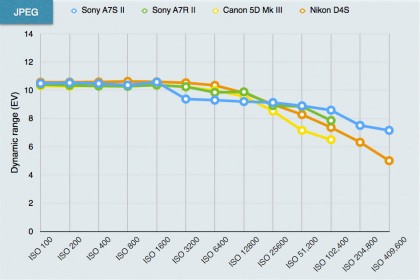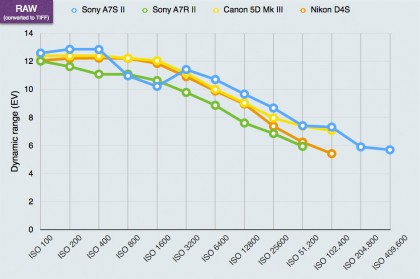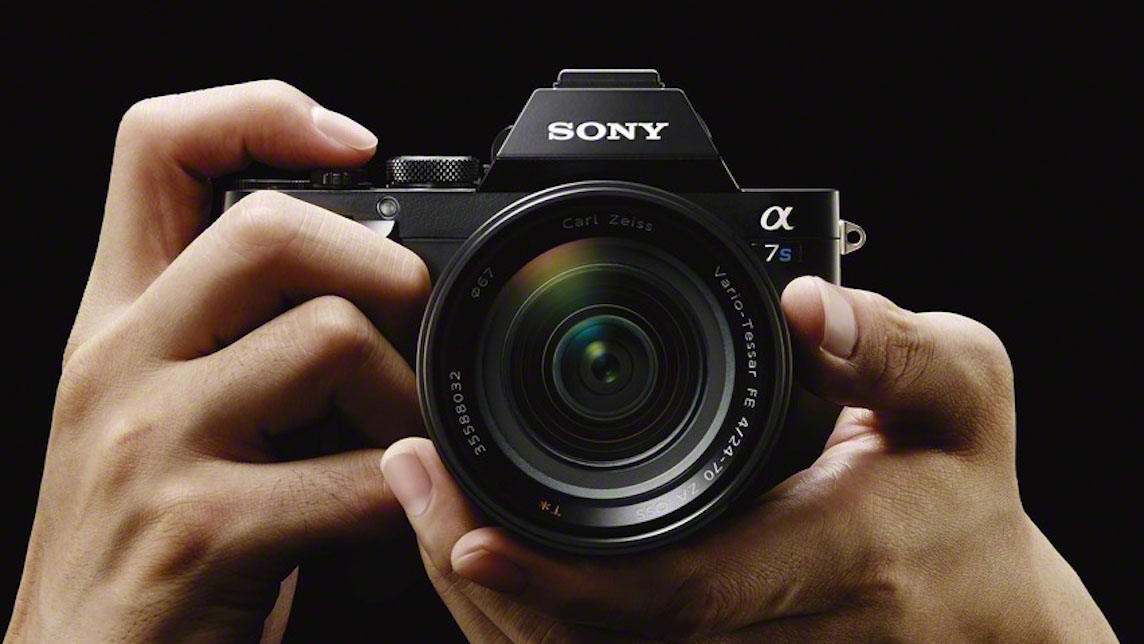Why you can trust TechRadar
Dynamic range is a measure of the camera's ability to record a wide brightness range. The higher the dynamic range, the less likely you are to see burnt-out highlights or blocked-in shadows. Dynamic range is measured in EV (exposure values) and its typically highest at low ISO settings, falling off as the ISO value increases.

JPEG dynamic range analysis: The relatively low resolution of the A7S II should give it an advantage in dynamic range because the individual photosites (pixels) are larger and can in theory capture more light and hence a wider range of light values. In practice, the A7S II only starts to show an advantage at ISO 51,200, which is well outside the range of normal photography. If you do need to shoot at these ISO settings, and higher, it does have an advantage over the rest.

Raw (converted to TIFF) dynamic range analysis: Apart from an odd dip from ISO 800-1600, the A7S II is narrowly the best of this group, though the Canon 5D Mark II and Nikon D4S run it a close second.
Current page: Lab tests: Sony A7S II dynamic range
Prev Page Lab tests: Sony A7S II resolution Next Page Lab tests: Sony A7S II signal to noise ratio